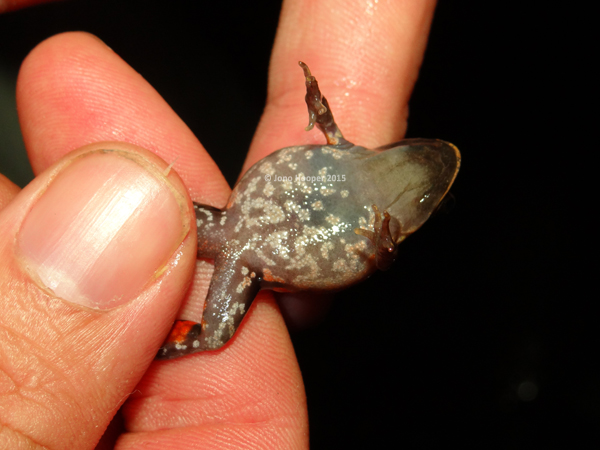Every three months I travel down to New South Wales with a colleague to undertake environmental monitoring at a council landfill facility. I’ve been keen to take full advantage of the interstate trip by getting out and meeting NSW’s frog fauna for the first time.
For well over a year now I’ve also had frequent online communication with a guy by the name of Aaron Payne, well known for his neat frog photography, expeditions and specialist knowledge on frogs. Last week we finally caught up outside his home south of Sydney before heading off to a few of his good frogging spots for my first encounters with some of NSW’s amphibians.
We first went to a small dam where where I heard and met Haswell’s Frog (Paracrinia haswelli). Funnily enough, it looks like a Crinina, though with noticeable differences.



Jervis Bay Treefrogs (Litoria jervisiensis) were also in chorus. He didn’t like setting still, let alone for a photo.


Jervis Bay Treefrogs (Litoria jervisiensis). Bright orange colour shown on the backs of the legs.

Now unlike our Cascade Treefrogs, NSW’s relative, the Leaf Green Treefrog (Litoria phyllochroa) can often be found around small dams as well as the more typical creeks. He wasn’t calling but looking very handsome.

Oh and of course the Clicking Froglets were there too, but time was of the essence so we had to move on!
We traveled down the road, parked and walked to a shallow sandstone creek, surrounded by vegetation that reminded my of our wallum/heathland ecosystem back on the Sunshine Coast. In and along this creek we found the Blue Mountains Treefrog (Litoria critopa) in amplexus…



and Lesueur’s Frog (Litoria lesueurii). In south-east QLD we have it’s closely related cousin, the Stony-creek Frog (Litoria wilcoxii).



There hadn’t been too much rain recently, and so the frogs weren’t as abundant as they otherwise can be. This also meant that the Red-crowned Toadlet (Pseudophryne australis) wasn’t out and about, but we did find their tadpoles.
It was good to have finally met one of NSW’s local frog gurus and to have seen five of NSW’s frog species for the first time!


Sounds like a pretty great night out Jono. I’m envious!